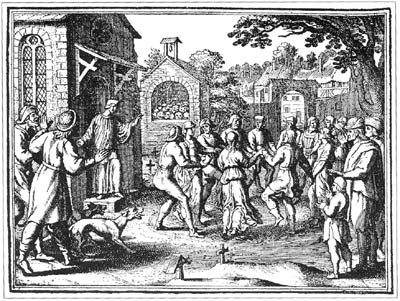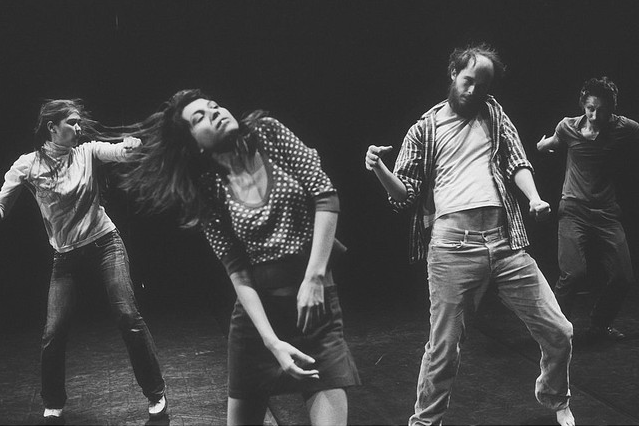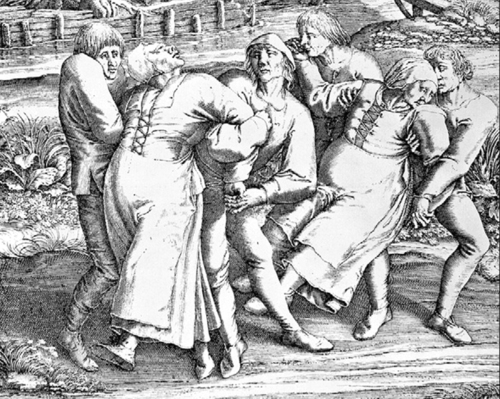Dancing Plague: Not Such A New Thing
Something that looks like dance mania can be observed during festivals or simply on a night out. People get worked up on music and crowds, dancing frantically to something they wouldn’t even listen at home. You probably know the feeling.
What happens to our brain and body that at one point something clicks and we are able to endure couple of hours of non stop dancing? And what if hours become days or weeks?
In 1518, people “danced themselves to death” for no obvious reason in Strasbourg, France. One woman started it, and others joined her. Within a month, there were 400 people involved. Many people took to dancing for days without rest, and, over the period of about one month, some of those affected died of heart attack, stroke, or exhaustion.
Local physicians announced that plague was a “natural disease” caused by “hot blood.” He ordered that the only cure for ‘patients’ would be to continue dancing as long as it takes to get it out of their systems. Pretty smart, taking into consideration that they were unstoppable anyway.
The earliest known outbreak of dancing mania occurred in the 7th century, and it reappeared many times across Europe until about the 17th century, when it stopped forever. In the 17th century, incidents of recurrent dancing were recorded by professor of medicine Gregor Horst, who noted:
‘Several women who annually visit the chapel of St. Vitus in Drefelhausen… dance madly all day and all night until they collapse in ecstasy. In this way they come to themselves again and feel little or nothing until the next May, when they are again… forced around St. Vitus’ Day to betake themselves to that place… one of these women is said to have danced every year for the past twenty years, another for a full thirty-two.’
It appears that dancing plague outbreaks occured mainly in times of hardship. There is a theory saying that notoriously stressed and afraid population is more likely to engage in any kind of ‘social manias’.



